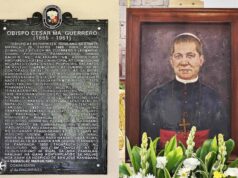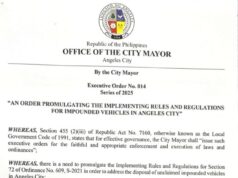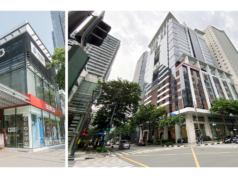CLARK FREEPORT – Two down, three more to go.
The arrest of the Dominguez brothers recently and the leader and members of the Bonifacio group in August last year may have neutralized their carnapping operations, but three other groups also based in Central Luzon have yet to be dismantled.
This was what Central Luzon police director Chief Supt. Alan Purisima reported during the recent peace and order summit attended here recently by all governors of his region’s seven provinces, as well as other local government officials who signed covenant to unite efforts against criminality.
This, even as Purisima noted that brothers Roger and Raymond Dominguez, identified as the leaders of the Dominguez carnapping group, have been known as capable of continuing operations even when they are behind bars.
The two are already under police custody after Roger was collared by the police in a traffic incident in Quezon City the other day and was held after his identity was established.
Raymond earlier turned himself over to the police following allegations both brothers were involved in the recent killing of car dealers.
Purisima said that the Lagman group, another notorious carnapping group led by one Wendel Lagman, is affiliated with the Dominguez group and also operates in Central Luzon and Metro Manila.
But unlike the Dominguez group which is known to have used force in carnapping, records indicated Lagman group members limited themselves to parked vehicles.
With the Dominguez group likely neutralized by the arrest of Roger and Raymond, the Lagman group and two others, identified as the Laxamana and Santos groups, remain active among such groups based in Central Luzon, Purisima said.
He noted that the Santos group, headed by one Ruperto Santos, operates in various parts of Central Luzon, but mostly in San Rafael and San Ildefonso in Bulacan. It is known to use force in its operations and is believed to have been responsible for the killing of a barangay official in San Rafael, he said.
The Laxaman group, headed by one Henry Laxamana, is also known to use force in carnapping and operates mostly in Tarlac and Pampanga.
Purisima reported that the Bonifacio group has already been neutralized with the arrest of its leader Eduardo Bonifacio and his members in August last year.
Of these groups, the Dominguez group has been the “most organized and active,” he noted. The Dominguez brothers had been jailed before on various carnapping cases but have always obtained liberty by posting bail.
Purisima noted that most of the carnapping cases in Central Luzon last year happened in Pampanga, while the most number of hijackings were noted in both Pampanga and Bulacan.
“The most carnapped vehicle is Toyota Fortuner, followed by Toyota Innova and Mitsubishi Estrada, while the most stolen motorcycles are of the Yamaha brand, followed by Honda,” he reported.
He also noted that more cars were taken by force from their drivers than those stolen while unattended at parking areas because of the need for car keys. The case is reverse in the case of motorcycles which were mostly carted off while parked.
The arrest of the Dominguez brothers recently and the leader and members of the Bonifacio group in August last year may have neutralized their carnapping operations, but three other groups also based in Central Luzon have yet to be dismantled.
This was what Central Luzon police director Chief Supt. Alan Purisima reported during the recent peace and order summit attended here recently by all governors of his region’s seven provinces, as well as other local government officials who signed covenant to unite efforts against criminality.
This, even as Purisima noted that brothers Roger and Raymond Dominguez, identified as the leaders of the Dominguez carnapping group, have been known as capable of continuing operations even when they are behind bars.
The two are already under police custody after Roger was collared by the police in a traffic incident in Quezon City the other day and was held after his identity was established.
Raymond earlier turned himself over to the police following allegations both brothers were involved in the recent killing of car dealers.
Purisima said that the Lagman group, another notorious carnapping group led by one Wendel Lagman, is affiliated with the Dominguez group and also operates in Central Luzon and Metro Manila.
But unlike the Dominguez group which is known to have used force in carnapping, records indicated Lagman group members limited themselves to parked vehicles.
With the Dominguez group likely neutralized by the arrest of Roger and Raymond, the Lagman group and two others, identified as the Laxamana and Santos groups, remain active among such groups based in Central Luzon, Purisima said.
He noted that the Santos group, headed by one Ruperto Santos, operates in various parts of Central Luzon, but mostly in San Rafael and San Ildefonso in Bulacan. It is known to use force in its operations and is believed to have been responsible for the killing of a barangay official in San Rafael, he said.
The Laxaman group, headed by one Henry Laxamana, is also known to use force in carnapping and operates mostly in Tarlac and Pampanga.
Purisima reported that the Bonifacio group has already been neutralized with the arrest of its leader Eduardo Bonifacio and his members in August last year.
Of these groups, the Dominguez group has been the “most organized and active,” he noted. The Dominguez brothers had been jailed before on various carnapping cases but have always obtained liberty by posting bail.
Purisima noted that most of the carnapping cases in Central Luzon last year happened in Pampanga, while the most number of hijackings were noted in both Pampanga and Bulacan.
“The most carnapped vehicle is Toyota Fortuner, followed by Toyota Innova and Mitsubishi Estrada, while the most stolen motorcycles are of the Yamaha brand, followed by Honda,” he reported.
He also noted that more cars were taken by force from their drivers than those stolen while unattended at parking areas because of the need for car keys. The case is reverse in the case of motorcycles which were mostly carted off while parked.



